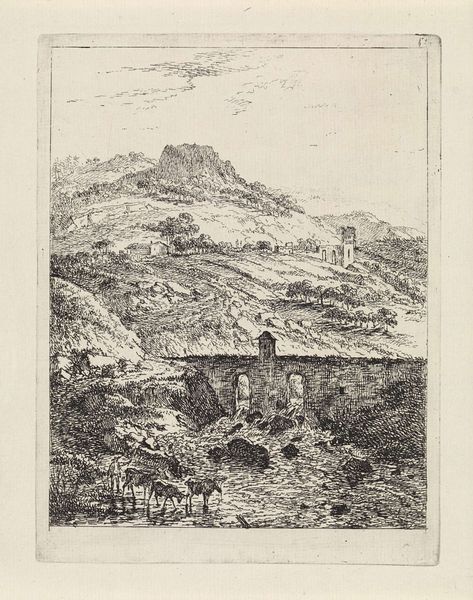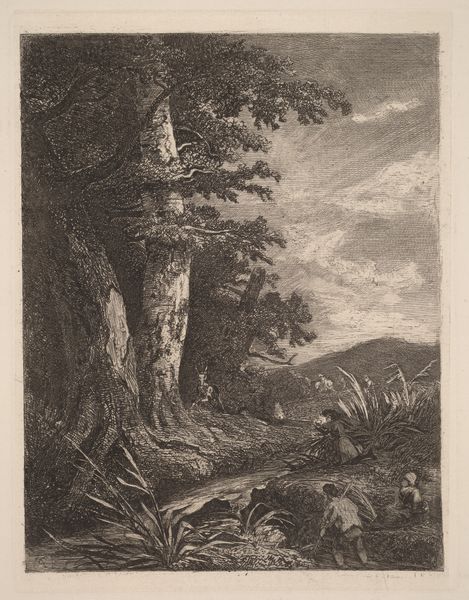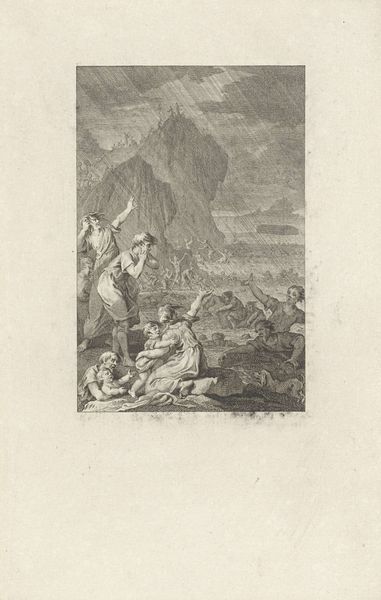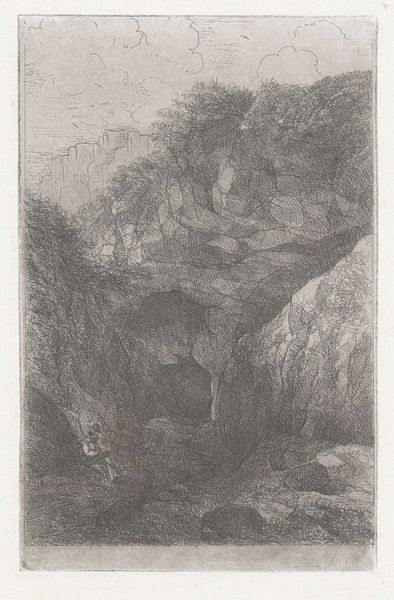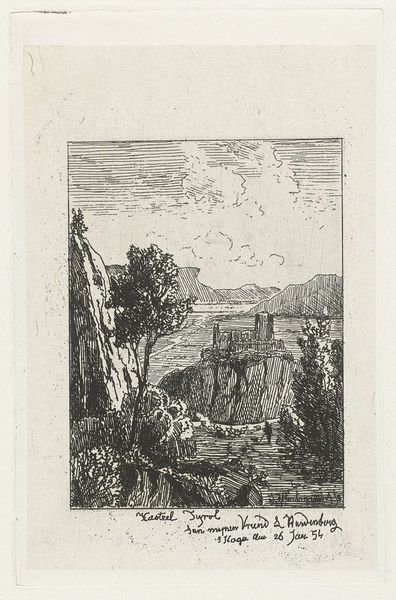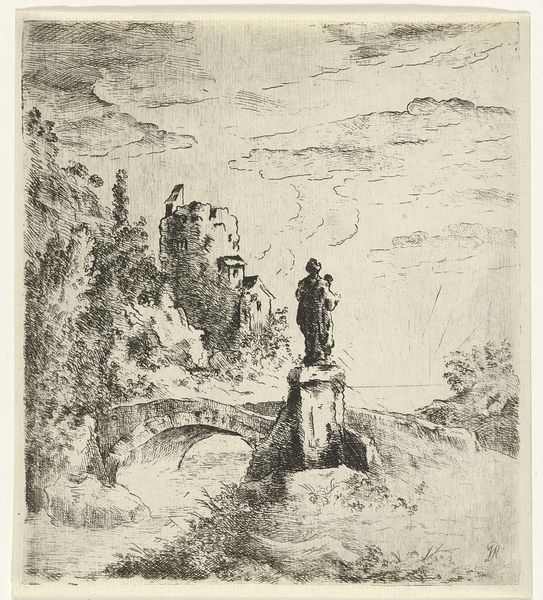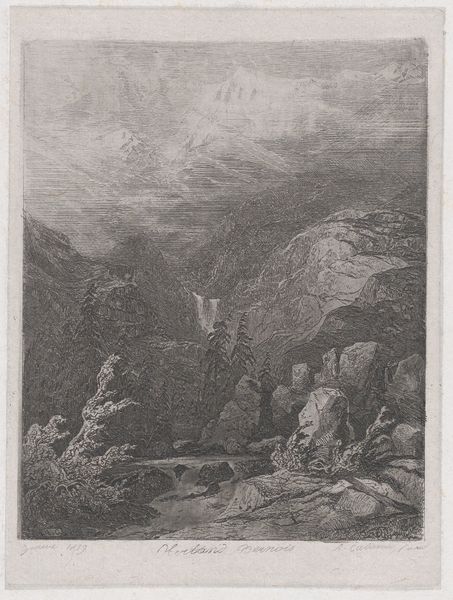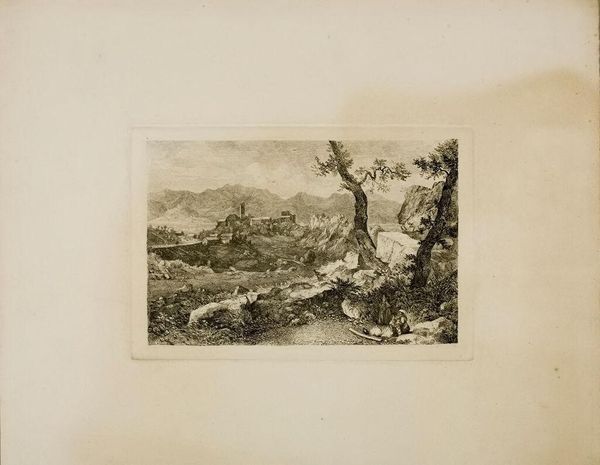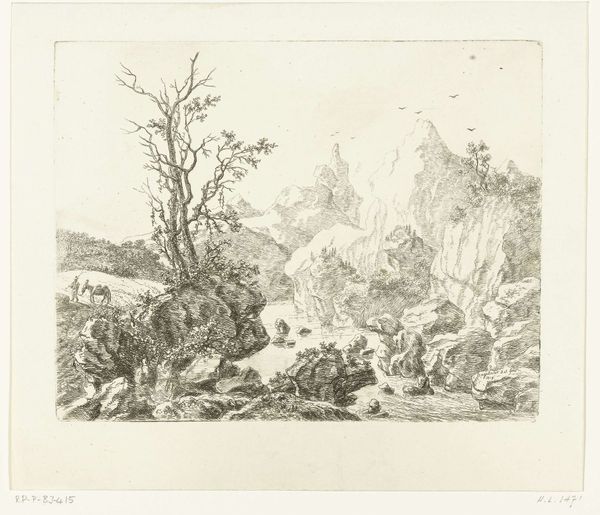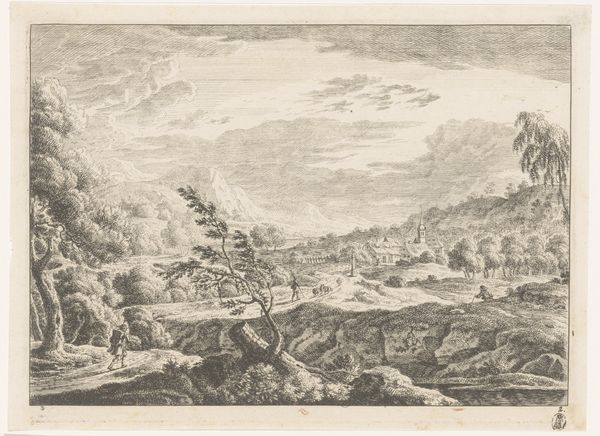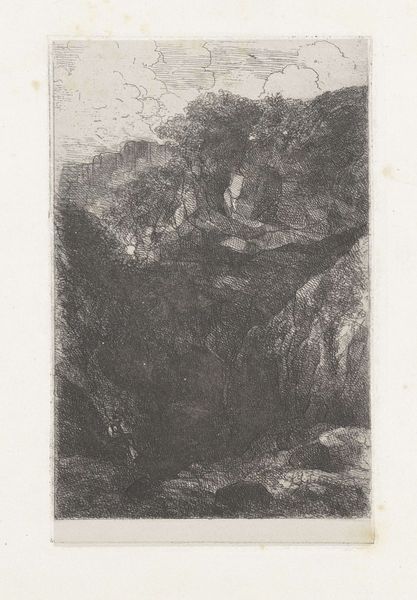
Copyright: Public Domain: Artvee
Editor: So this etching is called "Le Gué," or "The Ford," made by Odilon Redon in 1865. There's this stark, almost theatrical landscape, and then these tiny figures crossing the water. It feels like some grand myth is being enacted, but I can't quite put my finger on it. What do you make of it? Curator: "The Ford" indeed. Consider, the ford as a place of transition, a liminal space between here and there. Water, often a symbol of the unconscious, requiring a journey through. Notice how the figures are small in relation to the imposing landscape. Doesn't it suggest humankind's often precarious position within a larger, perhaps indifferent, world? Editor: That scale is striking, yes. They seem insignificant against those towering rocks. But what about the act of crossing itself? What symbolic weight does that carry, beyond the literal? Curator: Think of the historical context. The mid-19th century was a time of great social and scientific change. The journey could represent the crossing from the old to the new. Etching as a medium allowed for fine lines and shadows, but consider that those blacks could mean mystery and the unknown in what this 'new' is supposed to offer. This group journeys forward, towards us. Are they triumphant? Are they searching? Or are they lost? Editor: I hadn’t considered the 'Romanticism' aspect to this piece, but now that you mention the scale and symbolism, that unknown 'new' world appears even more ambiguous. It is so fascinating to think of it representing such historical transition through that kind of visual language. Curator: Indeed. The image seems simple, but carries a range of powerful cultural memories and ongoing relevance, especially as transitions continue to shape us all. Editor: It is certainly making me rethink what I originally assumed! Thanks for broadening my perspective.
Comments
No comments
Be the first to comment and join the conversation on the ultimate creative platform.
